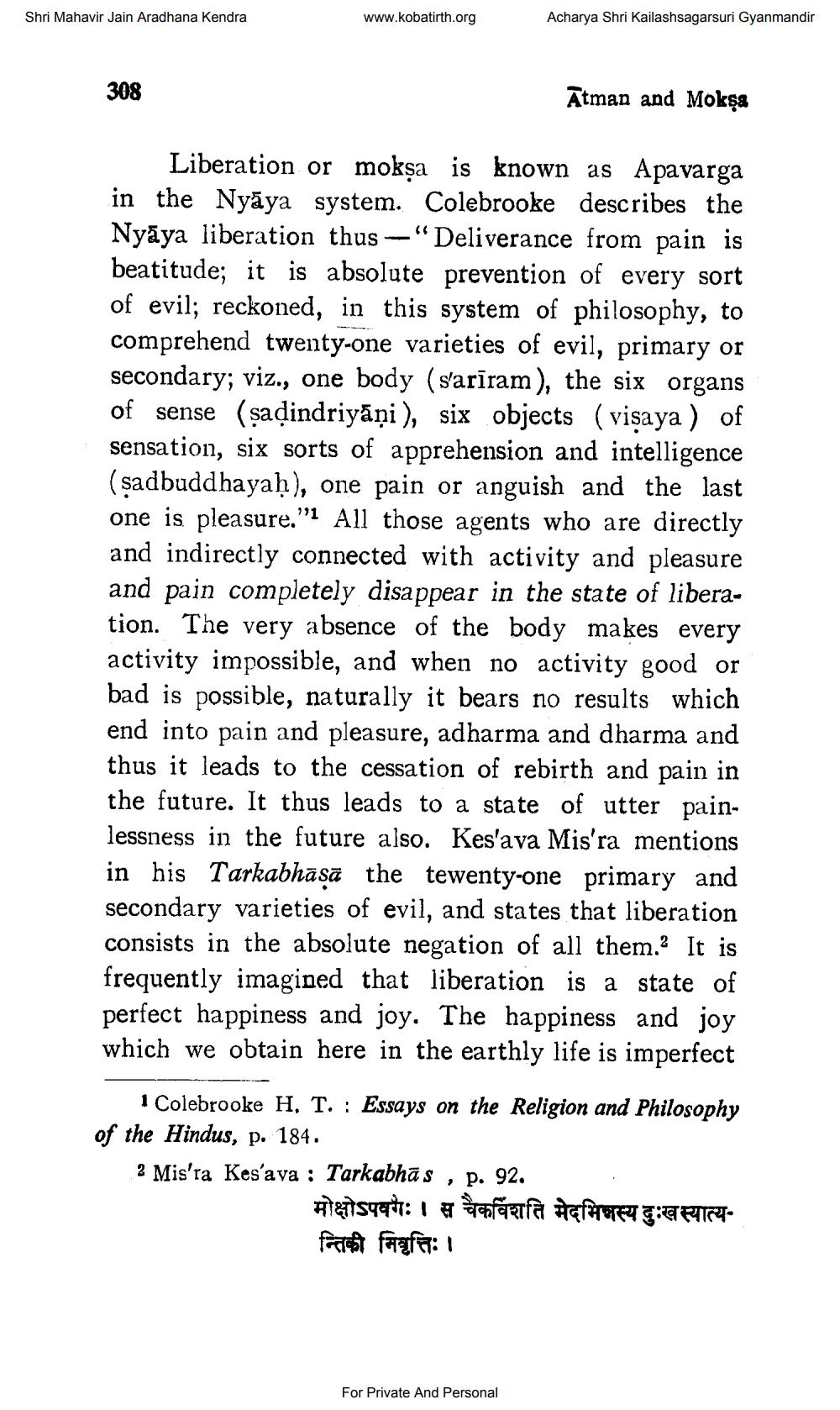________________
Shri Mahavir Jain Aradhana Kendra
www.kobatirth.org
Acharya Shri Kailashsagarsuri Gyanmandir
308
Atman and Moks8
Liberation or moksa is known as Apavarga in the Nyāya system. Colebrooke describes the Nyāya liberation thus —"Deliverance from pain is beatitude; it is absolute prevention of every sort of evil; reckoned, in this system of philosophy, to comprehend twenty-one varieties of evil, primary or secondary; viz., one body (sarīram), the six organs of sense (sadindriyāņi), six objects (vişaya ) of sensation, six sorts of apprehension and intelligence (şadbuddhayaḥ), one pain or anguish and the last one is pleasure."1 All those agents who are directly and indirectly connected with activity and pleasure and pain completely disappear in the state of liberation. The very absence of the body makes every activity impossible, and when no activity good or bad is possible, naturally it bears no results which end into pain and pleasure, adharma and dharma and thus it leads to the cessation of rebirth and pain in the future. It thus leads to a state of utter painlessness in the future also. Kes'ava Mis'ra mentions in his Tarkabhāsā the tewenty-one primary and secondary varieties of evil, and states that liberation consists in the absolute negation of all them. It is frequently imagined that liberation is a state of perfect happiness and joy. The happiness and joy which we obtain here in the earthly life is imperfect
1 Colebrooke H. T. : Essays on the Religion and Philosophy of the Hindus, p. 184. 2 Mis'ra Kes'ava : Tarkabhās , p. 92.
मोक्षोऽपवगः । स चैकविंशति मेदमिनस्य दुःखस्यात्यन्तिकी मिवृत्तिः।
For Private And Personal




